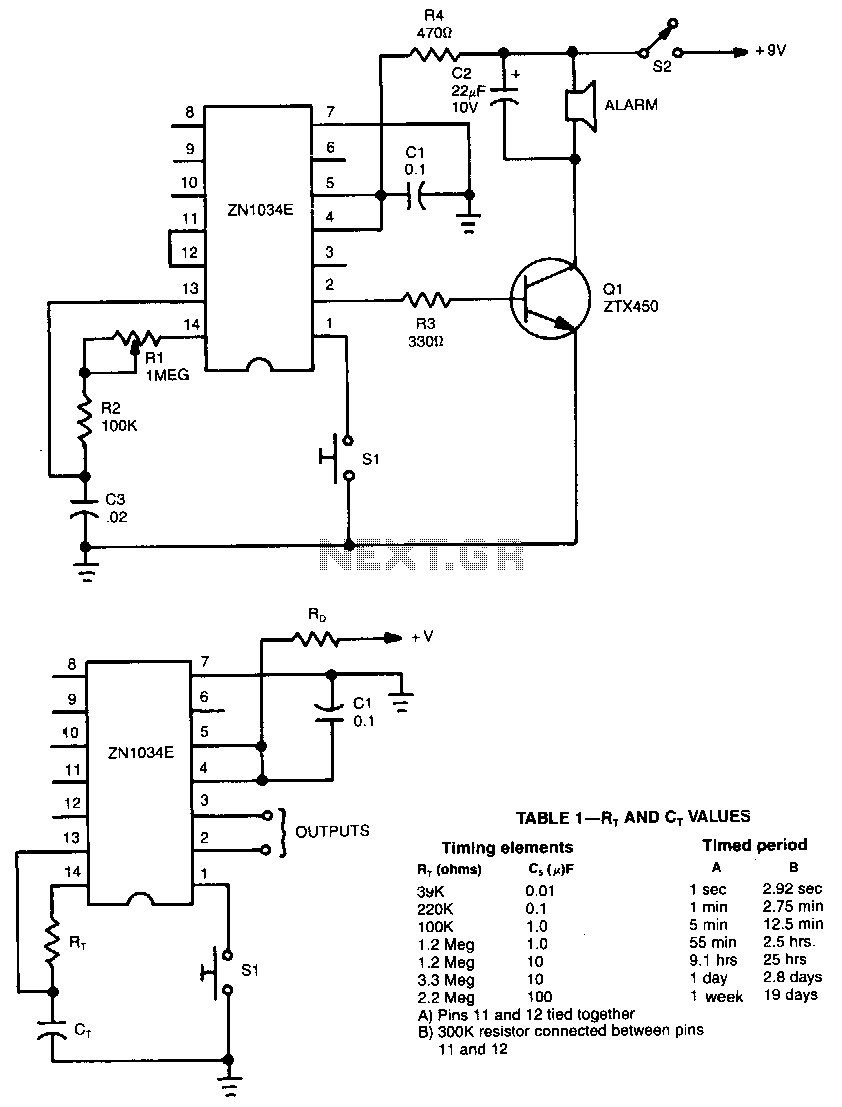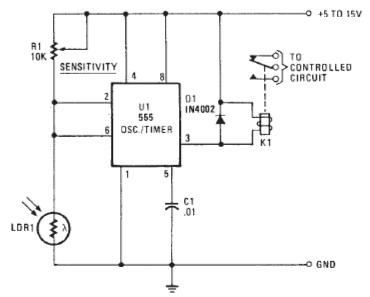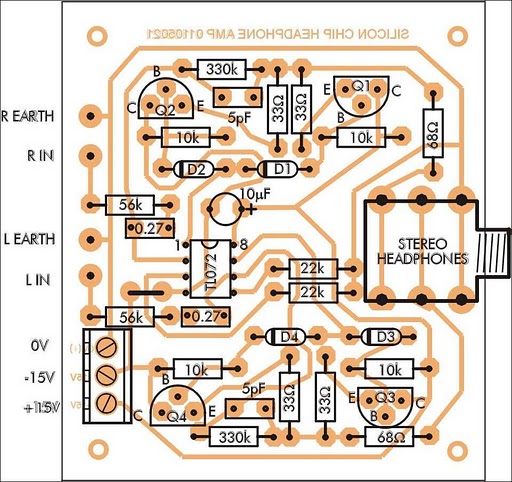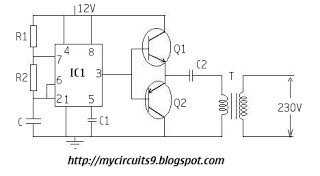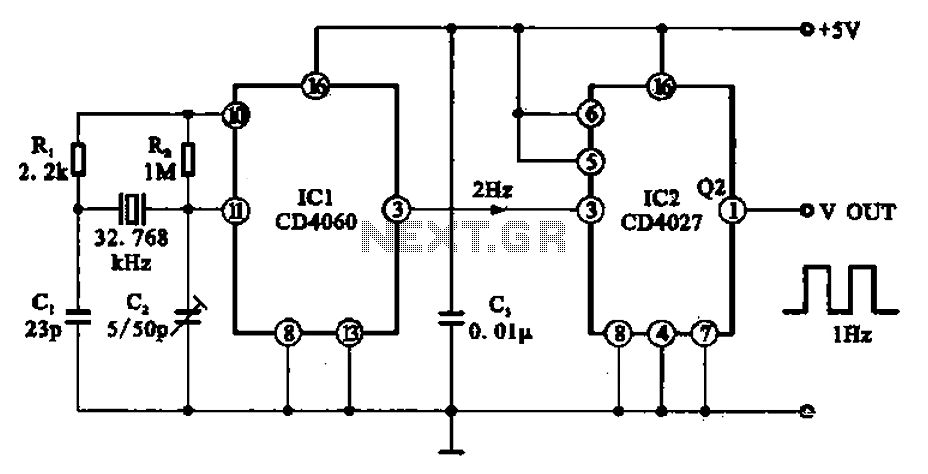
A Repeating Timer Circuit No.7
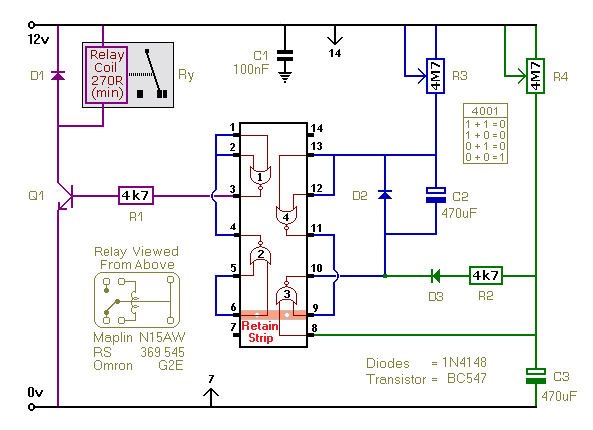
This timer utilizes a basic monostable circuit. The duration for which the relay remains energized, referred to as the ON period, is regulated by the resistor R3 and capacitor C2. Conversely, the duration for which the relay remains de-energized, known as the OFF period, is determined by the resistor R4 and capacitor C3. With the specified component values, time periods of up to 30 minutes can be achieved. The ON duration is influenced by the values of R3 and C2, while the OFF duration is influenced by R4 and C3. Due to manufacturing tolerances, the exact timing will depend on the characteristics of the actual components used. Users can select component values that meet their specific requirements. Approximately 70 seconds can be expected for every 1 MΩ and 100 µF. Therefore, using 4.7 MΩ and 100 µF will yield about 6 minutes, while 4.7 MΩ and 1000 µF can provide around one hour. If precise timing is not critical, fixed resistors can replace potentiometers. It is important to note that the on-board relay should not be used to switch mains voltage due to insufficient isolation between the relay contacts and low-voltage components. For switching mains voltage, a suitably rated relay should be mounted away from the board in a safe location. A single-pole, single-throw (SPST) or single-pole, double-throw (SPDT) relay has been utilized, but a multi-pole relay may be employed if required. The timer is designed to operate with a 12-volt power supply but can function within a range of 5 to 15 volts, provided a compatible relay is selected for the supply voltage. Support materials for this circuit include a step-by-step construction guide, a parts list, and a detailed circuit description.
The monostable timer circuit is structured to provide a reliable timing function by utilizing a combination of resistors and capacitors to create the desired ON and OFF periods. The circuit is built around a timing IC, typically a 555 timer in monostable mode, which is triggered by a low pulse to start the timing cycle. Upon triggering, the output goes high, energizing the relay and initiating the timing sequence. The time duration during which the relay remains activated is determined by the formula T = 1.1 * R * C, where T is the time in seconds, R is the resistance in ohms, and C is the capacitance in farads.
In practical applications, the choice of R3 and C2 will dictate the ON time, while R4 and C3 will control the OFF time. Adjustments can be made to these components to fine-tune the timing as needed. For instance, a larger capacitor or resistor will increase the time period, while a smaller value will decrease it. The circuit should be designed with adequate space to accommodate the components, ensuring that they are securely mounted and that there is no risk of short circuits.
Safety precautions must be observed when dealing with mains voltage. It is advisable to use a relay rated for the voltage and current levels of the load being switched. Additionally, incorporating isolation techniques, such as opto-isolators or separate power supplies for the low-voltage control circuit and the high-voltage load, can enhance safety and reliability.
The circuit board layout should be designed to minimize interference and ensure proper operation of the timer. Ground planes and proper routing of signal paths are essential to reduce noise and improve performance. The use of decoupling capacitors near the IC can also help stabilize the power supply and improve timing accuracy.
Overall, this monostable timer circuit offers flexibility and adaptability for various timing applications, making it a valuable tool in electronic design and automation tasks.This timer is based on a simple Monostable Circuit. The length of time the relay remains energized - the ON period - is controlled by the values of R3 & C2. And the length of time the relay remains de-energized - the OFF period - is controlled by the values of R4 & C3.
With the component values shown - periods of up to 30 minutes are available. T he length of time the relay remains energized is controlled by the values of R3 & C2. And the length of the time the relay remains de-energized is controlled by the values of R4 & C3. Owing to manufacturing tolerances - the precise length of the time periods available depends on the characteristics of the actual components you`ve used. You can choose component values that suit your own requirements. You should get about 70 seconds for every 1Meg/100uF. So 4M7 & 100uF will give about 6 minutes. And 4M7 & 1000uF will give about an hour. If your time periods don`t need to be too precise - and more-or-less is close enough - you can replace the pots with fixed resistors.
Do not use the "on-board" relay to switch mains voltage. The board`s layout does not offer sufficient isolation between the relay contacts and the low-voltage components. If you want to switch mains voltage - mount a suitably rated relay somewhere safe - Away From The Board.
I`ve used a SPCO/SPDT relay - but you can use a multi-pole relay if it suits your application. The timer is designed for a 12-volt power supply. However - it will work at anything from 5 to 15-volts. All you need do is select a relay to suit your supply voltage. The Support Material for this circuit includes a step-by-step guide to the construction of the circuit-board - a parts list - a detailed circuit description - and more. 🔗 External reference
The monostable timer circuit is structured to provide a reliable timing function by utilizing a combination of resistors and capacitors to create the desired ON and OFF periods. The circuit is built around a timing IC, typically a 555 timer in monostable mode, which is triggered by a low pulse to start the timing cycle. Upon triggering, the output goes high, energizing the relay and initiating the timing sequence. The time duration during which the relay remains activated is determined by the formula T = 1.1 * R * C, where T is the time in seconds, R is the resistance in ohms, and C is the capacitance in farads.
In practical applications, the choice of R3 and C2 will dictate the ON time, while R4 and C3 will control the OFF time. Adjustments can be made to these components to fine-tune the timing as needed. For instance, a larger capacitor or resistor will increase the time period, while a smaller value will decrease it. The circuit should be designed with adequate space to accommodate the components, ensuring that they are securely mounted and that there is no risk of short circuits.
Safety precautions must be observed when dealing with mains voltage. It is advisable to use a relay rated for the voltage and current levels of the load being switched. Additionally, incorporating isolation techniques, such as opto-isolators or separate power supplies for the low-voltage control circuit and the high-voltage load, can enhance safety and reliability.
The circuit board layout should be designed to minimize interference and ensure proper operation of the timer. Ground planes and proper routing of signal paths are essential to reduce noise and improve performance. The use of decoupling capacitors near the IC can also help stabilize the power supply and improve timing accuracy.
Overall, this monostable timer circuit offers flexibility and adaptability for various timing applications, making it a valuable tool in electronic design and automation tasks.This timer is based on a simple Monostable Circuit. The length of time the relay remains energized - the ON period - is controlled by the values of R3 & C2. And the length of time the relay remains de-energized - the OFF period - is controlled by the values of R4 & C3.
With the component values shown - periods of up to 30 minutes are available. T he length of time the relay remains energized is controlled by the values of R3 & C2. And the length of the time the relay remains de-energized is controlled by the values of R4 & C3. Owing to manufacturing tolerances - the precise length of the time periods available depends on the characteristics of the actual components you`ve used. You can choose component values that suit your own requirements. You should get about 70 seconds for every 1Meg/100uF. So 4M7 & 100uF will give about 6 minutes. And 4M7 & 1000uF will give about an hour. If your time periods don`t need to be too precise - and more-or-less is close enough - you can replace the pots with fixed resistors.
Do not use the "on-board" relay to switch mains voltage. The board`s layout does not offer sufficient isolation between the relay contacts and the low-voltage components. If you want to switch mains voltage - mount a suitably rated relay somewhere safe - Away From The Board.
I`ve used a SPCO/SPDT relay - but you can use a multi-pole relay if it suits your application. The timer is designed for a 12-volt power supply. However - it will work at anything from 5 to 15-volts. All you need do is select a relay to suit your supply voltage. The Support Material for this circuit includes a step-by-step guide to the construction of the circuit-board - a parts list - a detailed circuit description - and more. 🔗 External reference
